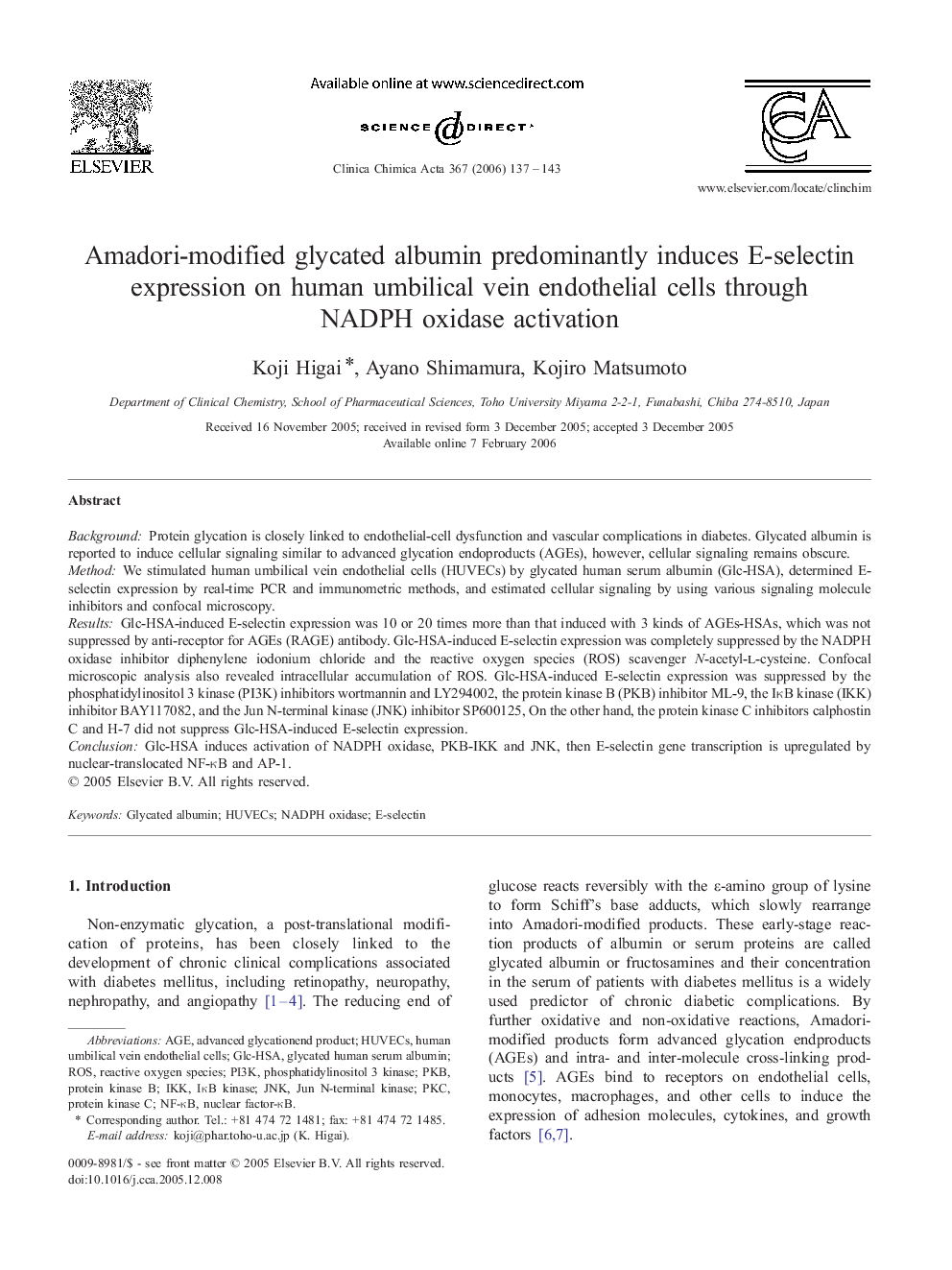| Article ID | Journal | Published Year | Pages | File Type |
|---|---|---|---|---|
| 1968092 | Clinica Chimica Acta | 2006 | 7 Pages |
BackgroundProtein glycation is closely linked to endothelial-cell dysfunction and vascular complications in diabetes. Glycated albumin is reported to induce cellular signaling similar to advanced glycation endoproducts (AGEs), however, cellular signaling remains obscure.MethodWe stimulated human umbilical vein endothelial cells (HUVECs) by glycated human serum albumin (Glc-HSA), determined E-selectin expression by real-time PCR and immunometric methods, and estimated cellular signaling by using various signaling molecule inhibitors and confocal microscopy.ResultsGlc-HSA-induced E-selectin expression was 10 or 20 times more than that induced with 3 kinds of AGEs-HSAs, which was not suppressed by anti-receptor for AGEs (RAGE) antibody. Glc-HSA-induced E-selectin expression was completely suppressed by the NADPH oxidase inhibitor diphenylene iodonium chloride and the reactive oxygen species (ROS) scavenger N-acetyl-l-cysteine. Confocal microscopic analysis also revealed intracellular accumulation of ROS. Glc-HSA-induced E-selectin expression was suppressed by the phosphatidylinositol 3 kinase (PI3K) inhibitors wortmannin and LY294002, the protein kinase B (PKB) inhibitor ML-9, the IκB kinase (IKK) inhibitor BAY117082, and the Jun N-terminal kinase (JNK) inhibitor SP600125, On the other hand, the protein kinase C inhibitors calphostin C and H-7 did not suppress Glc-HSA-induced E-selectin expression.ConclusionGlc-HSA induces activation of NADPH oxidase, PKB-IKK and JNK, then E-selectin gene transcription is upregulated by nuclear-translocated NF-κB and AP-1.
